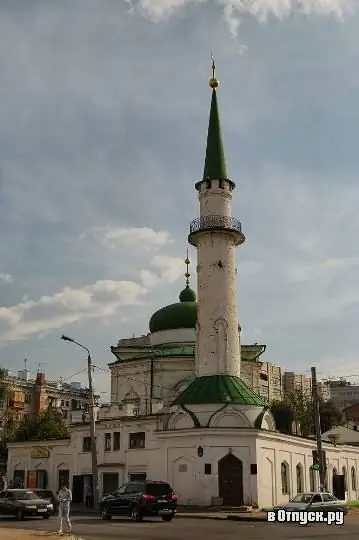
Description of the attraction
The Nurulla Mosque is located in the central region of Kazan. The minaret of the mosque overlooks the intersection of Kirov and Paris commune streets. The mosque has other names: "Sennaya", "Seventh Cathedral", "Yunusovskaya".
The mosque was built from 1845 to 1849 by the architect A. K. Loman. Construction work was carried out by Ibrahim (1806-1886) and Iskhak (1810-1884) Yunusovs. Funds for the construction of the mosque were bequeathed by the merchant Gubaidulla Mukhametrakhimovich Yunusov (1776-1849).
In 1929 the mosque was closed and the minaret was dismantled. In 1990, it received its modern name and was returned to the community of believers. From 1990 to 1995, the Nurullah Mosque was reconstructed, the minaret was restored. The project was developed by the architect R. V. Bilyalov, based on the project of the mosque in 1844.
The two-storey building of the mosque has the shape of an octahedron and a cascade-tiered structure in the plan. The ground minaret adjoins its northern side. Service and utility rooms are located on the ground floor of the mosque. The inner space of the main floor mosque is divided by arches into prayer halls. The mosque has a main hall topped with a turquoise semicircular dome. Round windows are stained-glass windows. The central part of the facade of the mosque, protruding in height, is covered with a keeled dome with a bulbous cupola. The Nurulla Mosque is designed in the eclectic style of the national-romantic trend.
The minaret of the Nurulla mosque resembles the Bulgarian minarets. For the first time, in the cult architecture of the Tatars, an attempt was made to connect the lost connection of times and traditions.
The Nurulla Mosque is a monument of Tatar religious architecture, which is a milestone in its development. The architecture of the Nurullah mosque marked the beginning of the spread of a new type of mosque: with a ground minaret located at the end of the building.






